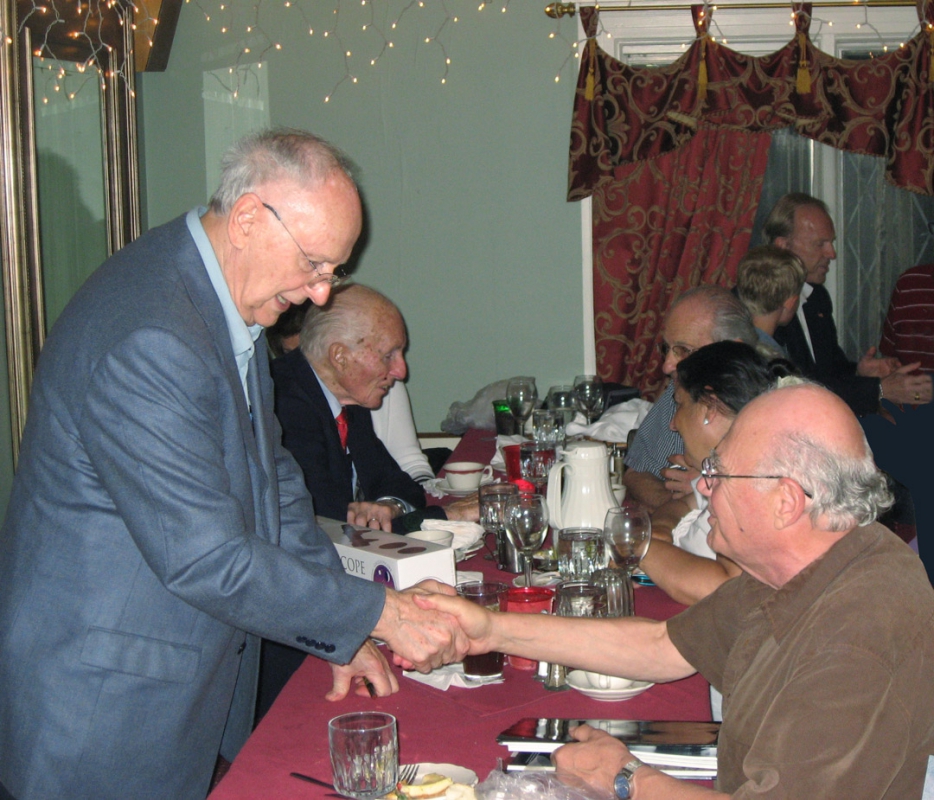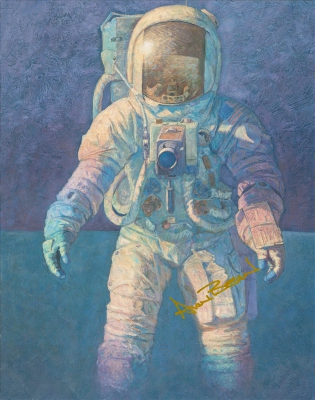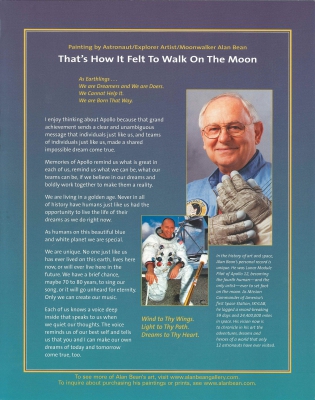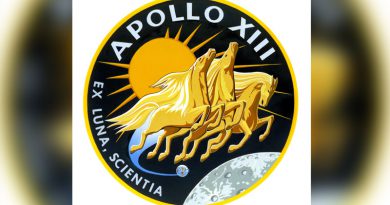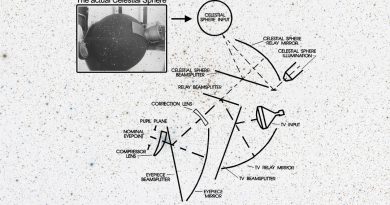The Passing of Alan Bean, 4th Man to Walk on the Moon
From New York Times OBITUARIES
Alan Bean, who became the fourth man to walk on the moon and turned to painting years later to tell the story of NASA’s Apollo missions as they began receding into history, died on Saturday at Houston Methodist Hospital. He was 86.
His death was announced by his family in a statement released by NASA.
Mr. Bean stepped onto the lunar surface preceded by Pete Conrad, the mission commander of their Apollo 12 flight, in November 1969, four months after Neil Armstrong and Buzz Aldrin became the first lunar explorers.
As many of you may know, Alan Bean was lost to us earthlings on May 26, 2018. You may also know that Stellafane is my favorite place in the world*. I’ve been attending since the mid-1950s and receiving telescope making awards in 1958 and 1972 were highlights in inspiring my astronomical quests. You may now know how special the 2009 convention was to me, with the chance to share dinner with about 100 attendees honoring Alan Bean, the keynote speaker that year, celebrating the 40th anniversary of the 1969 Apollo lunar landings.
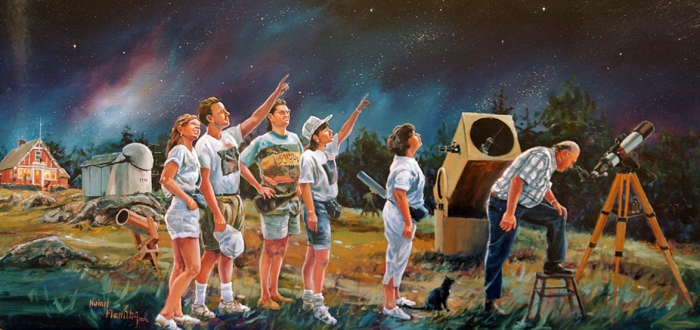
At this dinner my career came full circle: from making telescopes since high school (see About Al Nagler website article / mobile site), getting a job in 1957 at Farrand Optical in the Bronx, where I lived, hired by chief project engineer Earle Brown, who I knew was the Sky & Telescope editor of telescope making (and might appreciate my high-school project). After a year as a draftsman, I was invited to join the optical design department. Just imagine my state of mind, when I was asked one day if I would like the opportunity to design the visual simulator that would train our astronauts to land on the moon! The simulator views later inspired me to design the Nagler eyepiece, and found Tele Vue Optics in 1977 with my wife Judi, to complete that dream. At the dinner I was asked to tell a little about my career and connection to Alan Bean.

He never met me before or knew of my input to the realization of his goal, so when greeting me at the dinner table, I handed him a booklet I prepared, showing the optical design of the simulator he trained in, and a picture of him in the simulator that I got from NASA. On the cover I wrote: “Dear Alan, — Glad it Worked”.

Can life get any better than such a magic career connection? Well, maybe. Just read my biography by Michael Bakich in the April 2013 Astronomy (see our website for The Life and Times of Al Nagler). You’ll see pictures and the simulator design I included in the booklet, along with the Stellafane painting and the “Magic Moment” picture of meeting Alan Bean.
Memories of Apollo remind us what is great in each of us, remind us what we can be, what our teams can be, if we believe in our dreams and boldly work together to make them a realityAlan Bean — “That’s How It Felt to Walk On The Moon”
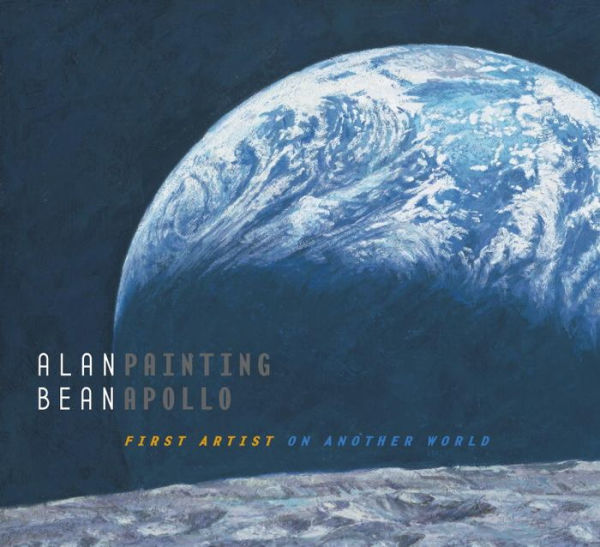
— Al Nagler

